HP HPE6-A46 Delta-Aruba Certified Switching Professional Exam Online Training
HP HPE6-A46 Online Training
The questions for HPE6-A46 were last updated at Dec 17,2025.
- Exam Code: HPE6-A46
- Exam Name: Delta-Aruba Certified Switching Professional Exam
- Certification Provider: HP
- Latest update: Dec 17,2025
Refer to the exhibit.
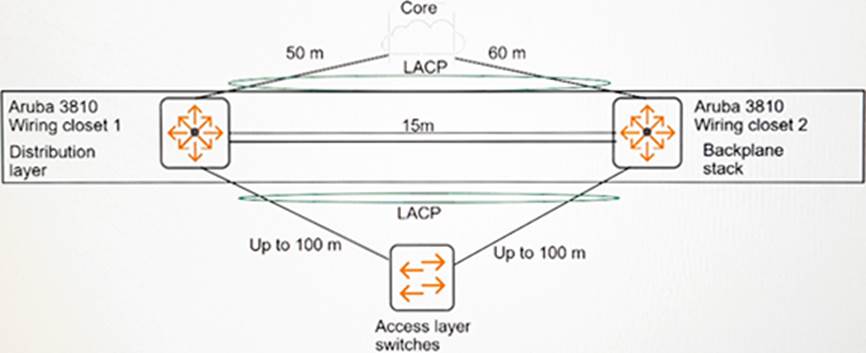
A company requires distribution layer switches that can provide Layer 2 and Layer 3 redundancy. The exhibit shows the proposal for these switches.
Which change to the proposal will help meet the company’s requirements?
- A . The proposed switches should be replaced with switches such as the Aruba 2930M to support the backplane stacking technology.
- B . VRRP should be implemented instead of backplane stacking to support the Layer 3 redundancy requirements.
- C . Link aggregations should be established without LACP to support the Layer 2 redundancy requirements and backplane stacking limitations.
- D . The proposed switches should be replaced with switches that support VSF to support the required distance between stack members.
Network administrators need to track when traffic matches deny entry in an ACL applied to a port. They want the alert to be sent to a syslog server that is already set up to send logs.
What should administrators do to enable alerts?
- A . Specify the log option for the ACL entry, and enable ACL debugging.
- B . Set the debug destination to session, and enable ACL debugging.
- C . Enable ACL debugging, and enable SNMP port security traps.
- D . Specify the log option for the ACL entry, and enable SNMP port security traps.
Refer to the exhibits.
Exhibit 1
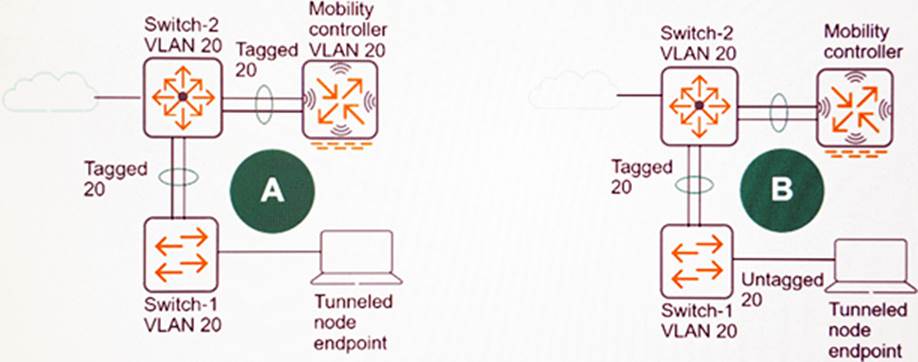
Exhibit 2
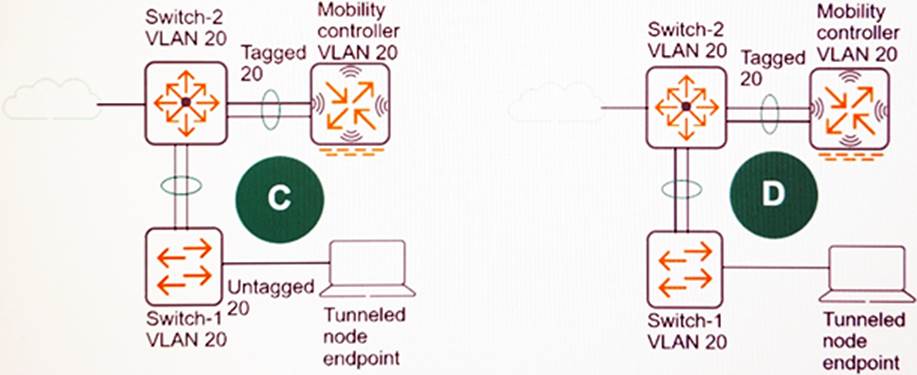
In the exhibits, VLAN 20 under a device name indicates that the device is configured with that VLAN. The exhibits also indicate whether VLAN 20 is statically configured on each link, either as an untagged or a tagged VLAN. If the link has no label, VLAN 20 is not statically configured on that link.
A network administrator needs to deploy AOS-Switches that use port-based tunneled node. The plan calls for tunneled-node endpoints to be assigned to VLAN 20 and for the Aruba Mobility Controller to handle the tunneled-node traffic at Layer 2.
Which exhibit shows the correct plan for VLAN 20 in the wired infrastructure?
- A . A
- B . B
- C . C
- D . D
Refer to the exhibits.
Exhibit 1
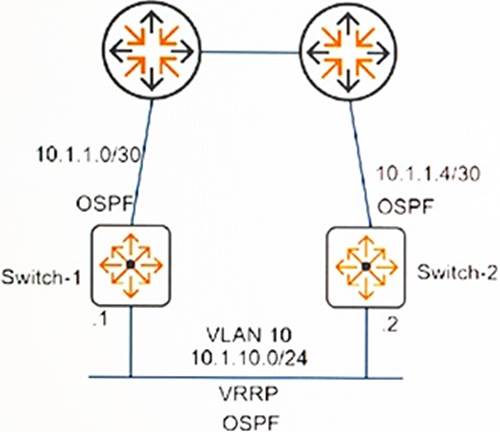
Exhibit 2
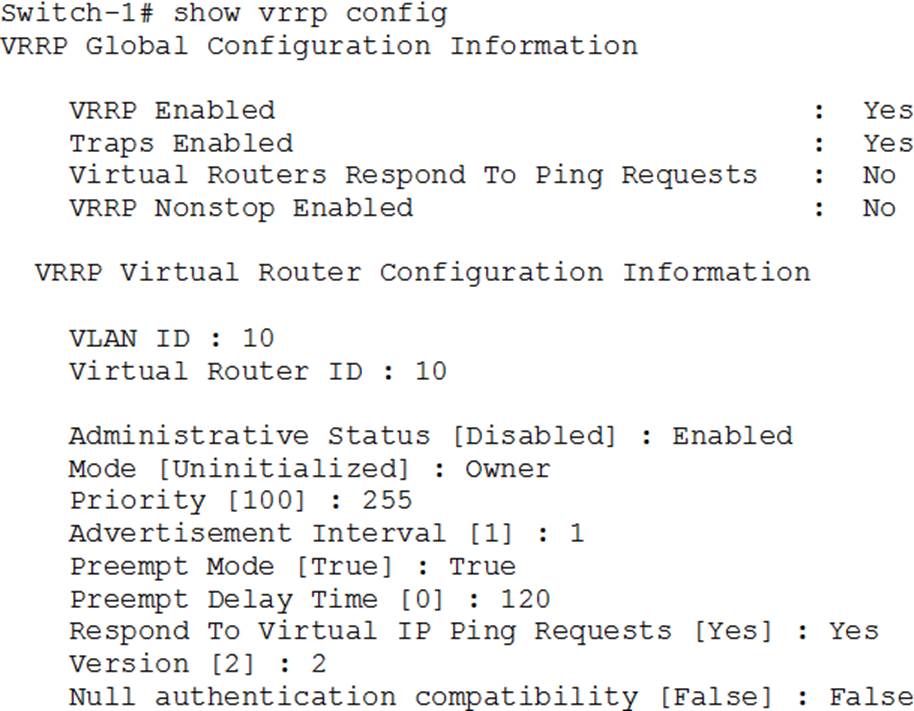
Switch-1 has a power issue that causes it to fail. When Switch-1 comes back up, endpoints lose connectivity for a few minutes. The network administrator decides to enter this command on Switch-1:
Switch-1 (config)# vlan 10 vrrp vrid 10 preempt-delay-time 120
Exhibit 2 shows the VRRP configuration just after the change.
What is the effect of this change?
- A . Switch-1 and Switch-2 both become Master in their own VRRP virtual router due to the delay timer mismatch. The mismatch must be fixed.
- B . Switch-1 now waits to take over as Master if it fails and recovers. This should prevent the connectivity issue from occurring again.
- C . Switch-1 experiences an internal error in the VRRP process. This error causes Switch-2 to take over as Master for VLAN 2.
- D . Switch-1 continues to act as it did before the preempt delay time was set. Administrators must plan additional changes to fix the issue.
Refer to the exhibits.
Exhibit 1
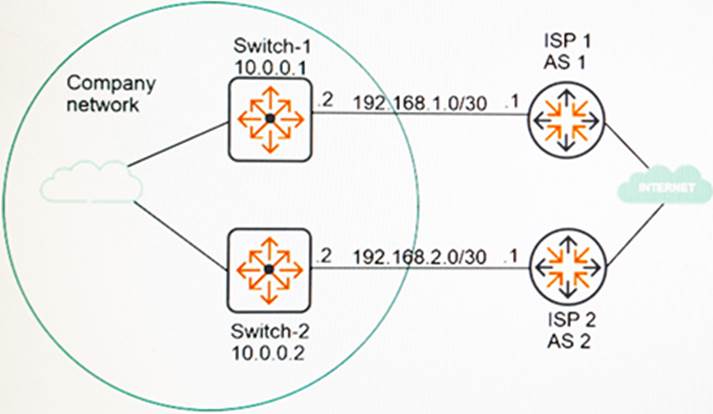
Exhibit 2
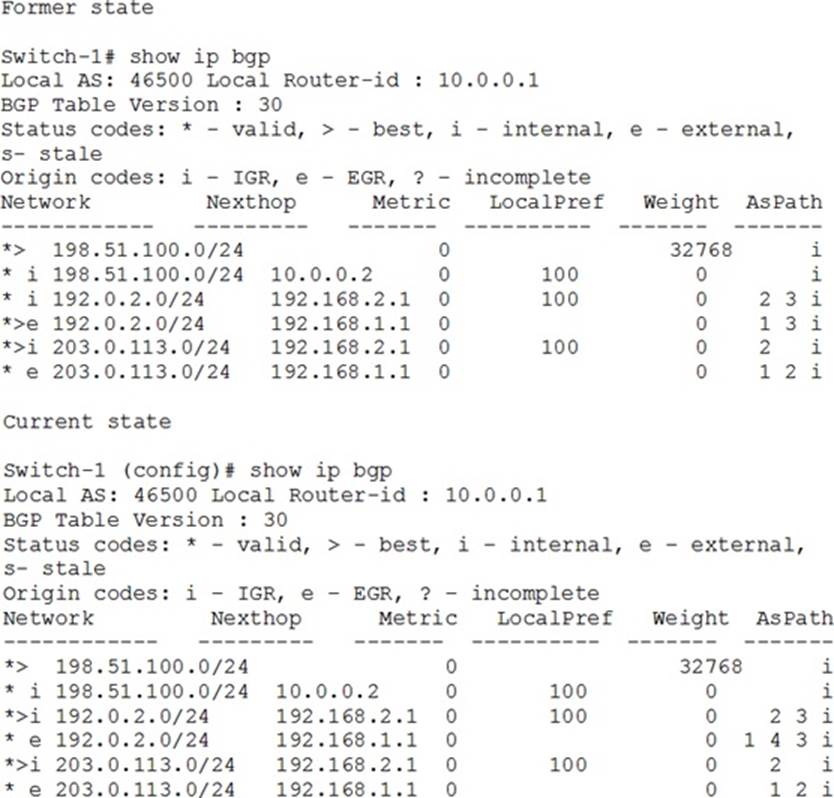
Exhibit 1 shows a portion of the BGP routing table when the BGP solution was first deployed. Exhibit 2 shows the same portion at the current time.
What can explain the current state?
- A . Due to changes in the private network, Switch-1 can no longer reach 192.168.2.1.
- B . Switch-1 can no longer reach ISP 1 at 192.168.1.1.
- C . Due to changes at ISP 1, Switch-1 now selects a different best route.
- D . An administrator has applied a route map on Switch-1 that filters advertised routes.
Which switches can be deployed in a mesh topology for backplane stacking?
- A . Aruba 2920 switches
- B . Aruba 2930F switches
- C . Aruba 2930M switches
- D . Aruba 3810 switches
A network administrator needs to create a QoS policy on an AOS-Switch.
What is one component that the administrator must create before the policy?
- A . an extended IPv4 ACL
- B . a traffic behavior
- C . an extended MAC ACL
- D . a traffic class
Refer to the exhibits.
Exhibit 1
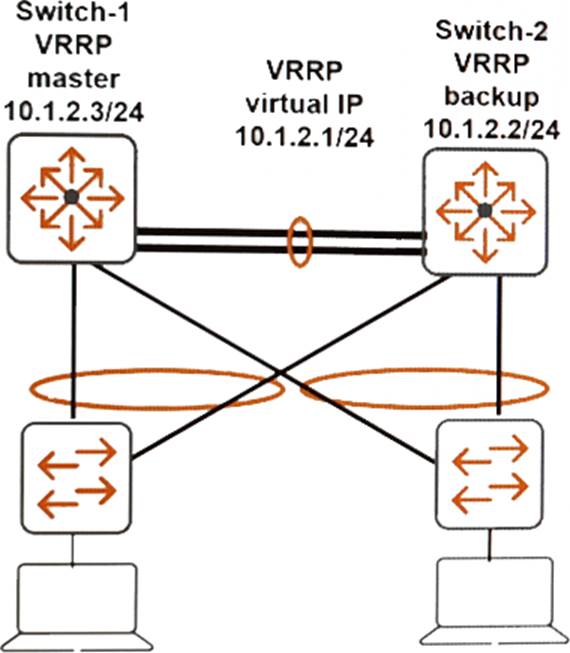
Exhibit 2
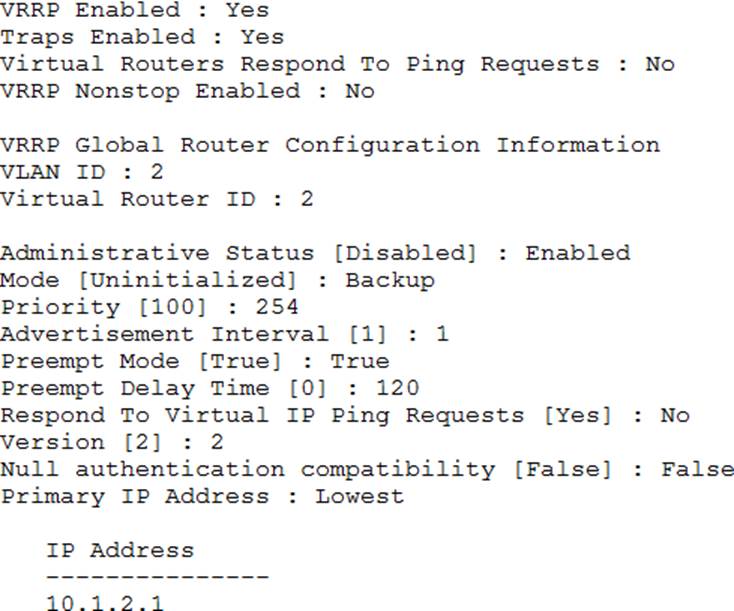
Switch-1 and Switch-2 are configured to provide VRRP in VLAN 2. The default gateway for VLAN 2 is set to the VRRP virtual IP. Client-1 in VLAN 2 cannot ping its default gateway.
Based on the exhibits, what can administrators determine?
- A . The VRRP preempt delay time has not yet expired, and administrators should try to ping the gateway again in several minutes.
- B . Switch-1 and Switch-2 have the same virtual router ID. The conflict interferes with connectivity.
- C . Preempt mode is enabled on both Switch-1 and Switch-2, so the Master role continues to alternate between them, and the pings go astray.
- D . This is the expected behavior, and Switch-1 should still be able to route traffic for Client-1.
A network administrator needs to create a backplane stack with four AOS-Switches. The administrator wants to choose which switch becomes the commander.
Which procedure meets those needs?
- A . Boot all of the switches at the same time and then connect the backplane stacking links. Then, access the desired commander, and make sure it has member ID 1.
- B . Configure backplane switches settings on each switch while disconnected. Make sure the desired commander has priority value 1. Then, connect the switches.
- C . Boot up the desired commander first and make sure stacking is enabled on it. Then, connect the stacking links and boot the other switches.
- D . Configure backplane switching settings on each switch while disconnected. Make sure the desired commander has member ID 1. Then, connect the switches.
A company deploys AOS-Switches at sites with inexperienced IT staff. The main office network administrators want to monitor thresholds to generate alerts on branch switches.
What should be set up for this purpose?
- A . an SNMP trap
- B . an RMON alarm
- C . an auto-config server
- D . an sFlow instance
Latest HPE6-A46 Dumps Valid Version with 169 Q&As
Latest And Valid Q&A | Instant Download | Once Fail, Full Refund

